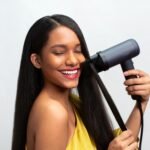Human hair wigs
Human hair wigs have become a popular choice for anyone seeking versatility, natural appearance, and durability in hair solutions. Unlike synthetic wigs, human hair wigs offer a more realistic look, can be styled with heat tools, and last longer when properly cared for. This guide will explore the types of human hair wigs, their benefits, maintenance tips, and advice on choosing the perfect wig for your lifestyle and hair needs.
Types of Human Hair Wigs
There are several main types of human hair wigs, each with unique characteristics:
-
Remy Human Hair Wigs – Remy hair is considered the highest quality because the cuticles are kept intact and aligned in the same direction. This prevents tangling, preserves softness, and allows for long-lasting shine.
-
Virgin Human Hair Wigs – Virgin hair is completely unprocessed and has never been chemically treated. It can be dyed, permed, or styled according to your preferences while maintaining its natural texture.
-
Processed Human Hair Wigs – Processed hair has been chemically treated to achieve a certain color or curl pattern. While more affordable than virgin hair, it requires more maintenance and may have a shorter lifespan.
Remy vs. Virgin Hair: Remy hair focuses on cuticle alignment, while virgin hair emphasizes unprocessed, natural strands. Both provide excellent quality, but virgin hair offers more styling flexibility.
How to Identify High-Quality Human Hair Wigs
When shopping for a wig, consider these key factors:
-
Hair Texture: High-quality wigs feel soft, smooth, and tangle-free.
-
Cap Construction: Look for lace or monofilament caps for natural hairlines and comfort.
-
Density: Choose a density that complements your natural look without appearing too thick or thin.
-
Color Matching: Ensure the wig matches your skin tone for a natural appearance.
For premium human hair wigs and expert guidance, visit Designermen.
Choosing the Right Wig Length and Style
Selecting the correct length and style is essential for a flattering look:
-
Short Wigs: Ideal for low-maintenance, everyday wear.
-
Medium Length: Versatile and easy to style for casual or professional looks.
-
Long Wigs: Offer more styling options but require more maintenance.
Consider your lifestyle, face shape, and occasion when choosing a wig length. Layered wigs or wavy textures can also enhance volume and movement.
Wig Maintenance and Care
Proper care extends the lifespan of human hair wigs and keeps them looking fresh:
-
Washing: Use sulfate-free shampoos and conditioners. Wash the wig gently in cool water.
-
Conditioning: Apply a deep conditioner to maintain moisture and softness.
-
Drying: Pat dry with a towel, avoid wringing, and let it air dry on a wig stand.
-
Styling: Use heat styling tools sparingly. Low to medium heat settings are recommended to prevent damage.
Daily Care Tips: Brush gently, store on a wig stand when not in use, and avoid excessive exposure to sun or chemicals.
Styling Human Hair Wigs
Creative Hairstyles:
-
Natural Look: Use a wide-tooth comb to detangle and style with light mousse.
-
Updos and Braids: Ideal for special occasions or formal events.
-
Quick Everyday Styles: Loose waves or straight styles are easy to maintain daily.
Heat Styling: While human hair wigs can be styled with curling irons or straighteners, always use a heat protectant spray to prevent damage.
Accessorizing: Hairbands, scarves, or clips can elevate the look while protecting hair from friction and breakage.
Natural and Organic Human Hair Wigs
For those seeking chemical-free options, natural and organic wigs are increasingly popular:
-
Made from Remy or virgin hair without synthetic additives
-
Often come with lace caps for natural hairlines
-
Can be dyed or styled with minimal processing
Benefits: Reduced irritation, longer-lasting softness, and environmentally friendly production.
Common Mistakes to Avoid
Even high-quality human hair wigs can suffer if not handled properly:
-
Using harsh shampoos or products with sulfates
-
Over-styling with heat tools
-
Storing wigs incorrectly (folding instead of using a wig stand)
-
Failing to trim split ends or maintain the wig’s shape
Pricing and Where to Buy
Cost Considerations:
-
Remy and virgin human hair wigs are more expensive but offer longevity and styling flexibility.
-
Processed wigs are more affordable but may require frequent replacement.
Trusted Sources:
-
Visit Designermen for authentic human hair wigs, expert guidance, and maintenance tips.
-
For further insights on styling and care, see External Reference: WebMD Hair Wigs Guide.
Affordable vs. Luxury: Depending on your budget, wigs range from £100–£1,000+, with higher-end options offering premium cuticles, cap construction, and styling flexibility.
Conclusion
Investing in human hair wigs provides versatility, natural appearance, and long-term satisfaction when selected and maintained properly. Understanding the differences between Remy, virgin, and processed hair, choosing the right length, style, and cap construction, and following proper care routines ensures your wig looks natural and lasts longer. Whether for fashion, hair loss solutions, or occasional use, high-quality human hair wigs elevate confidence and style.



